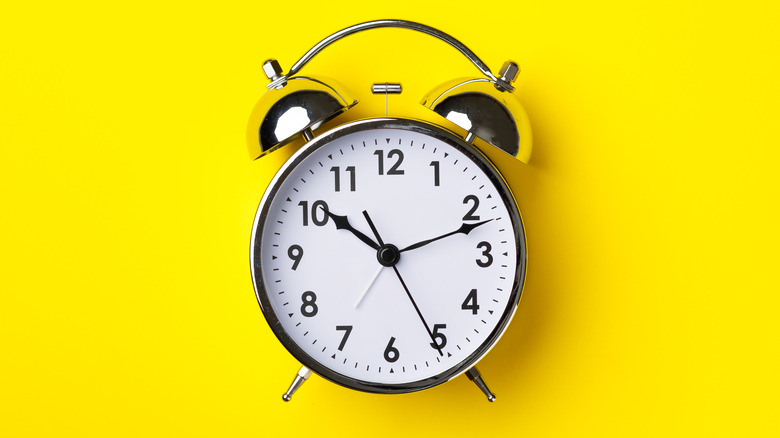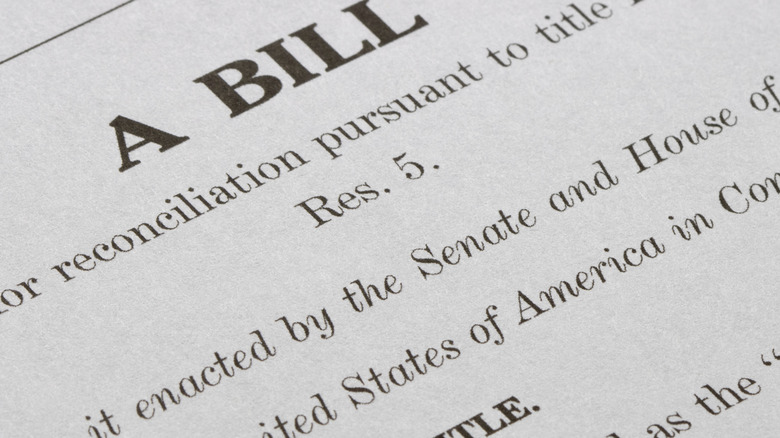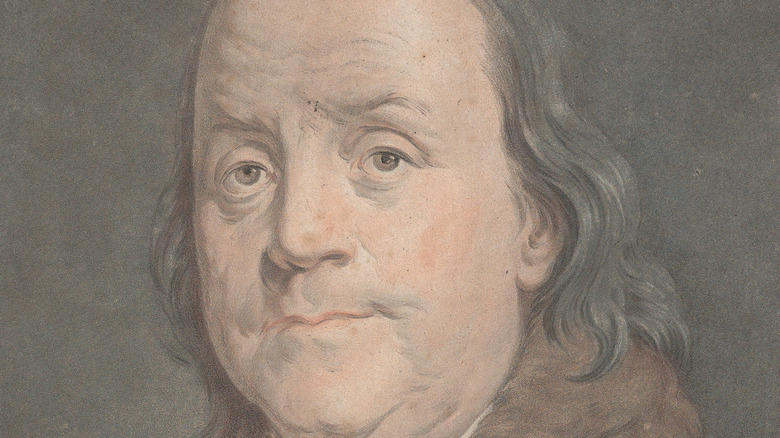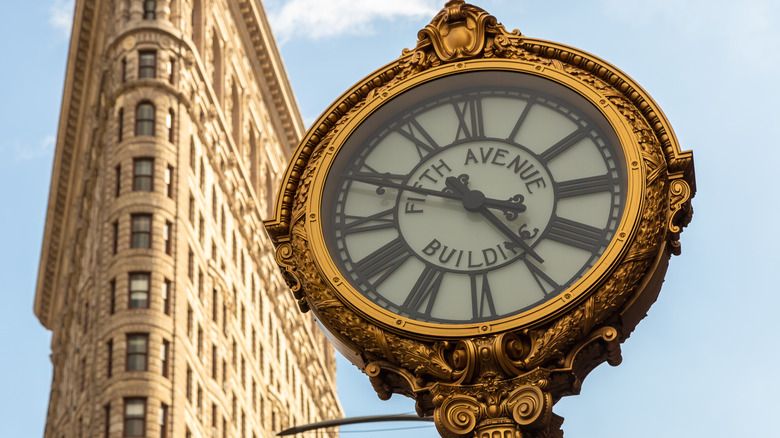What Permanent Daylight Savings Time Would Mean For The U.S.
In about 70 countries worldwide, including most of the United States, one of the least pleasant weeks of the year comes in mid-March. Daylight Savings Time means that early on the second Sunday of the month, official time skips one hour. You lose one hour of sleep, confusing you, your pets, and children, for the rest of the day. Every night for the next few days feels shorter and lest restful until you finally get used to the new arrangement.
Why do we torture ourselves like this (not everyone does, of course, but we'll get to that later)? Ostensibly, it's to take advantage of the lengthening spring days. The shift forward means that we spend more of the evening in the sunlight. This is great news for amateur athletes, little kids who want to play on the street, and other people who want to be outside after work or school. Theoretically, it can even help save energy costs — you don't have to keep the lights on if the sun is shining.
Daylight savings might be history
But many, many people are sick of the changing time — so sick, in fact, that in March of 2022 the U.S. Senate approved a bill to end it forever in the United States. Called the Sunshine Protection Act, this proposed law passed unanimously by voice vote, according to Reuters. It proposes to make the Daylight Savings hours (i.e. normal time between March and October) permanent.
Reuters quoted Senator Marco Rubio as saying, "I know this is not the most important issue confronting America, but it's one of those issues where there's a lot of agreement. If we can get this passed, we don't have to do this stupidity anymore." As of mid-March, there seems to be bipartisan interest in the House of Representatives as well, though President Biden had not yet publicly addressed to the issue.
Supporters of the bill point to its anticipated effects: No fumbling with your wristwatch and car radio twice a year, more sunlight in fall and winter evenings, even less seasonal depression (a lack of sunshine is bad for us). But is making Daylight Savings Time permanent the best policy? To find out, we have to look at its wonky history both in the U.S. and elsewhere.
Founded by Franklin? Not quite
There is a persistent urban legend that Benjamin Franklin, the great American patriot and polymath, invented Daylight Savings Time. This, according to History, is untrue.
Franklin was probably the first to suggest the idea, though. In 1784, when Franklin was living in France as a diplomat, he wrote a droll letter to the editors of the Journal of Paris. After spending an evening agreeing with various eminent Parisians that the cost of lighting homes was too high (he claimed), he went home and straight to bed. At six o'clock something woke him up. "I imagined at first, that a number of those lamps had been brought into [my room]," he wrote, but he soon realized it was the sun. He realized then that if the hours shifted to accommodate the daylight as it changed from season to season, people would save a tremendous amount of money on candles and lamp oil — over 96 million francs, according to his calculations.
"I say it is impossible that so sensible a people," he wrote, "under such circumstances, should have lived so long by the smoky, unwholesome, and enormously expensive light of candles, if they had really known, that they might have had as much pure light of the sun for nothing."
The first attempts
Franklin's idea was never taken seriously, except as a playful mind experiment. In 1905, however, a Londoner named William Willett would come to the same conclusion independently. Willett was riding his horse early one morning, according to History, when he realized that people were wasting their summer daylight. If everyone shifted their clocks forward by 80 minutes in the spring — April, according to his calculation — and switched them back in October, people would have more of their day lit up by the sun.
"Everyone appreciates the long light evenings," Willett would write in a 1907 pamphlet, "The Waste of Daylight" (per National Museums Scotland). "Everyone laments their shrinkage as Autumn approaches... Nevertheless Standard Time remains so fixed, that for nearly half the year the sun shines upon the land, for several hours each day while we are asleep."
Even Parliament considered Willett's proposal, although they turned it down for impracticality. But the pamphlet got people talking. In 1916, Germany instituted the world's first Daylight Savings regimen. Britain followed suit in weeks, calling the new measures "Summer Time."
Chaos and complaints
The American government passed a Daylight Savings regimen into law in 1918, the last year of World War I, in the hopes of saving money on heating and lighting fuel. But, as History explains, the measure was massively unpopular. The most grumbling came from rural constituencies. Contrary to what many people say, Daylight Savings was never intended to help farmers get more productivity out of their summer days. On the contrary, farmers already based their working day on the sun, rather than the hour. The change seriously disrupted their work. On dairy farms, for example, the hour change in shipping deadlines meant that farmers had to try to milk cows who weren't ready to be milked — unpleasant for the cow, unpleasant for the milker, unpleasant for wholesalers facing a shortage. In 1919, the law was rescinded.
But only the national law. Individual states and cities made their own decision about changing or not changing their clocks. The result was chaos. By 1965, the state of Iowa alone had no fewer than 23 different time regimens, and on a 35 mile (56km) bus trip from Ohio to West Virginia, commuters had to adjust their watches seven times.
A bit of cohesion, but not too much
In 1966, Congress passed the Uniform Time Act which standardized Daylight Savings Time nationally. It was undoubtedly a relief to the Iowans. Nevertheless, Hawaii and Arizona held out, refusing to institute the change (though reservation territories of the Navajo Nation located in Arizona do observe Daylight Savings Time).
Other U.S. territories have also refused to change their clocks back and forward, including Puerto Rico, Guam, American Samoa, the U.S. Virgin Islands, and the Northern Mariana Islands of the Pacific. Of course, for countries close to the equator, Daylight Savings doesn't make much sense, as a December day and a June day will have more or less the same amount of sunlight for them. It would hardly be worth the headache. Within the United States, though, certain communities, like the Amish, do not observe Daylight Savings Time despite living at latitudes that see considerable seasonal fluctuation.
Is it worth it?
What if the Amish, and Marco Rubio, have a point, and Ben Franklin was wrong? A number of studies have indicated that the presumed savings in energy that Daylight Savings would bring — since people would be keeping lights, plus heating or air conditioning, on for less time — don't really amount to much (per History). The US Department of Transport found, in the middle of the 1970s energy crisis, that changing to Daylight Savings Time only saved about one percent in spring and fall energy spending. A University of California, Santa Barbara study from 2006 actually found that switching to Daylight Savings cost the state of Indiana about one percent extra in residential electrical costs in spring and fall. Air conditioning seems to be key here, offsetting some initial savings on lighting.
There are other, unexpected effects to take into consideration, too. National Geographic reports that heart attacks go up around the two yearly time changes, as do car crashes. But take note: Making Daylight Savings permanent brings its own risks. When the US attempted it in the 1970s, car accidents skyrocketed, including incidents involving children walking to school in the dark (per Washingtonian). There's a chance the Sunshine Protection Act may not be worth the cost — but only time will tell.






